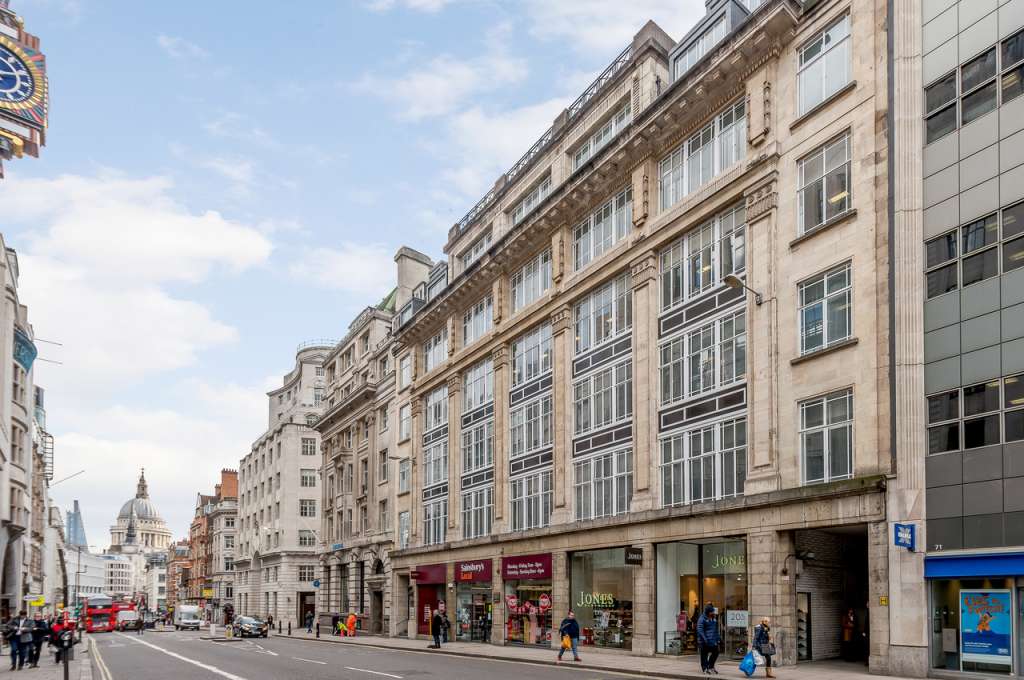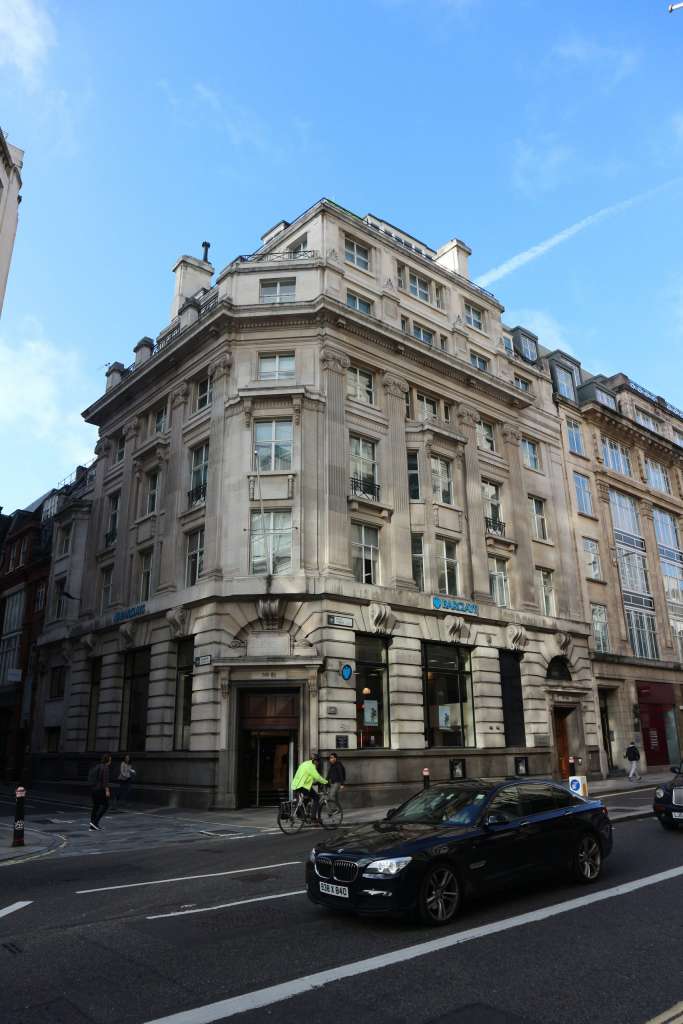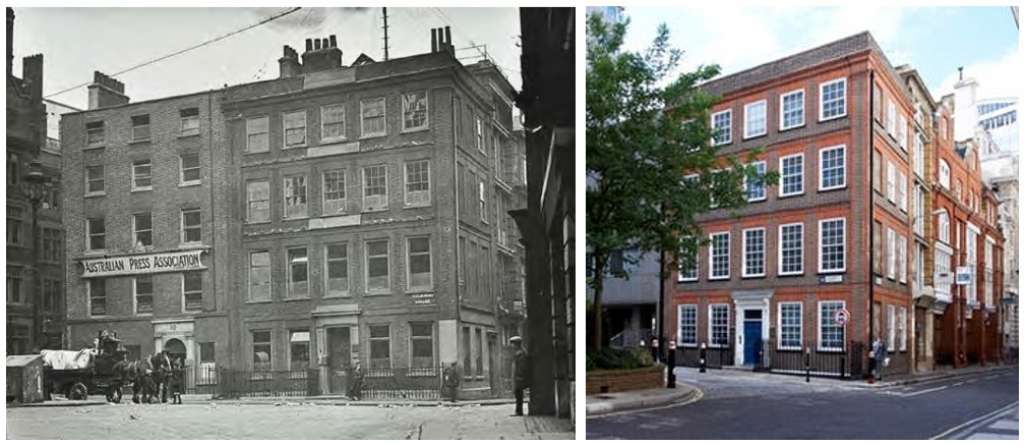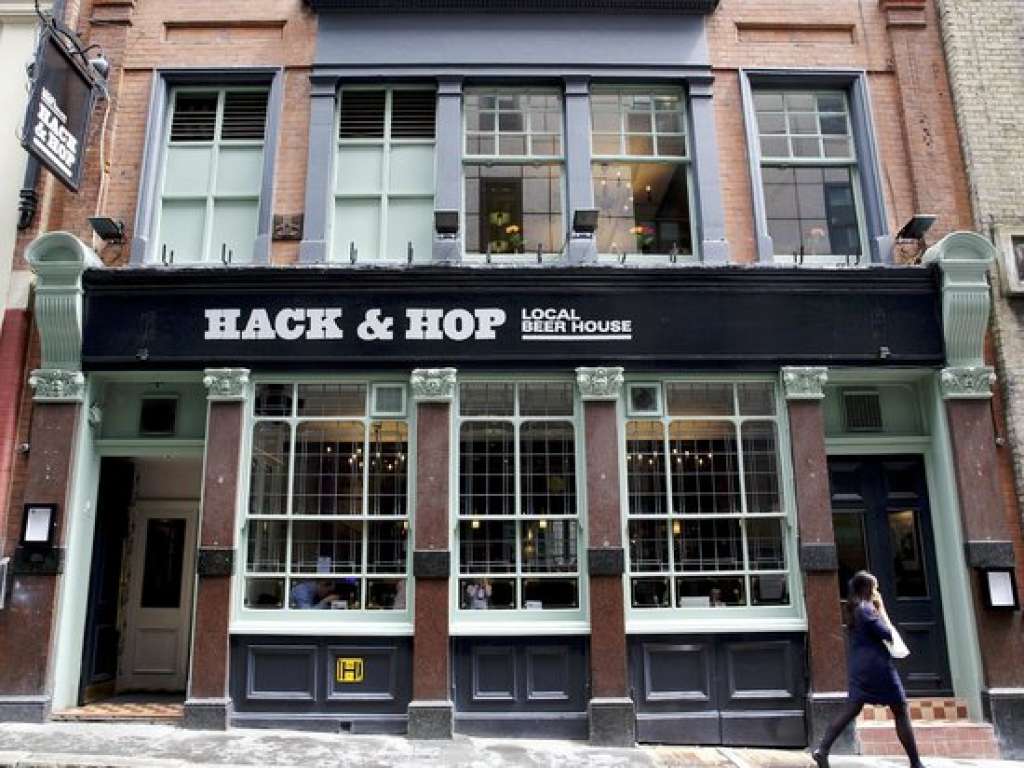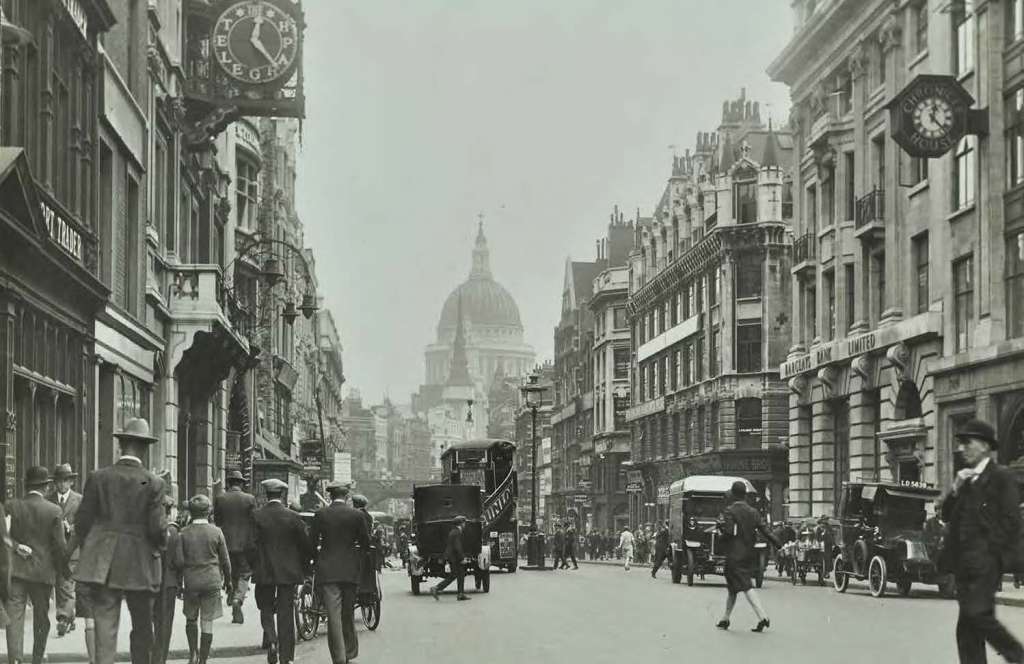PRESS RELEASE: Bulldozers threaten Fleet Street in City of London
20th April 2021
City of London Corporation set to decide on plans to bulldoze major historic buildings on one of London's most famous thoroughfares
SAVE Britain’s Heritage has strongly objected to demolition proposals for 69-81 Fleet Street and four other historic buildings across the Fleet Street Conservation Area in central London.The plans are set to be decided by planning committee this Thursday 22nd April 2021.
The City Corporation, which in this case is both the applicant and the decision maker, is recommending that planning permission is granted despite strong opposition from Historic England, the government’s heritage advisors, as well as SAVE, the Twentieth Century Society and the Victorian Society.
Under the plans, three large historic but unlisted buildings fronting onto Fleet Street dating from the early to mid 20th century would be lost.
Henrietta Billings, director of SAVE Britain’s Heritage, say: “Conservation areas like this one are designed to recognise and protect the special character, flair and heritage of our important streets and places. Fleet Street is famous for its rich newspaper history, as well as its largely well-preserved streets and alleyways and medieval street pattern. Large scale demolition-creep of this kind is crass and short-sighted in any location - let alone in a so-called conservation area. The whole approach needs a re-think.”
Marcus Binney, executive chairman of SAVE Britain’s Heritage says: “Fleet Street is one of the most historic thoroughfares in London, linking the City and Westminster. Its lively commercial architecture, a mixture of impressive banks and newspaper premises, remains remarkably unchanged since the Second World War."
Every frontage is etched in photographs and film recordings of state events for a century and more. The supposed public benefits claimed for this scheme do not begin to outweigh the massive harm caused by the destruction of a substantial part of the conservation area. Given the opposition, these proposals must be the subject of a public inquiry."
Alec Forshaw, a leading author on London architecture and former conservation principal, says: “This is a dreadfully harmful scheme in heritage terms, and I challenge the alleged public benefits of a slightly larger public realm. The enlarged public realm is in itself harmful to the tight and intimate nature of the Fleet Street Conservation Area, with its narrow alleys and yards.”
Nos 72-78 Fleet Street, known as Chronicle House, is an impressive office building designed and built in 1924 for the newspaper trade by Hebert, Ellis & Clarke in a stripped back classical style using Portland stone and cast concrete.
Next door stands Nos. 80-81 Fleet Street, a neo-Baroque former bank building (now Barclays Bank) also dating from 1924 built in Portland stone with grey granite cladding to designs by the architects C.J. Dawson, Son and Allardyce.
Both buildings are noted as making positive contributions to the overall character of the Fleet Street Conservation Area in the City Corporation’s adopted appraisal and were commended for listing by the Twentieth Century Society in July 2020.
Also impacted by the proposals is Salisbury Square, the form and location of which can be traced back to the medieval period as the former Great Court of the Bishop of Salisbury’s palace. The square is set to be reshaped following the demolition of No.1 Salisbury Square, a fine, five storey early Georgian town house carefully rebuilt in 1962 following war damage that illustrates the type of buildings that once surrounded Salisbury Square in the 18th and 19th centuries.
To the west of the site on Whitefriars Street stand two historically significant but unlisted buildings that are also slated for demolition. Nos. 36-38 Whitefriars Street is a narrow fronted, early 20th century red brick office building in a plain classical style. Adjoining it to the south is No. 35 Whitefriars Street, a Queen Anne style public house designed by B. Wilkinson as the Coach & Horses in 1895-97, who’s richly designed Victorian façade is largely intact. The City of London extended the conservation area boundaries in 2007 to include both buildings.
In place of these buildings are proposed three large scale, single block buildings of seven, eight and ten storeys providing a new HQ for the City of London Police, a courthouse for HM Courts and Tribunal Service and a commercial office building.
SAVE considers the proposals raise significant issues regarding the management and protection of the City of London’s historic environment, and in particular, the Fleet Street Conservation Area and multiple unlisted buildings which contribute to its national significance.
We have also objected to the monolithic scale and singular design of the buildings proposed which is totally at odds with the characterful and varied historic frontages which make Fleet Street and the conservation areas along its length so special.
Strategic oversight
SAVE has written to the Secretary of State Robert Jenrick to request the plans be called in for examination at a public inquiry, given the nationally significant nature of the proposals and the fact that the City of London Corporation is both the landowner, applicant and the statutory decision body in this case.
The protection of conservation areas
In Historic England’s response to the plans, it cites the substantially harmful impact the scheme will have on the Fleet Street Conservation Area and the unjustified loss of non-designated heritage assets across the site which positively contribute to the character and charm of Fleet Street and the wider area.
Historic England also states that: “Major impacts such as this can progressively and fundamentally erode the character of a conservation area, and it is important to recognise therefore that moderate harm in the context of a large and highly significant conservation area is a very serious issue…We consider this to be a very serious issue given the degree of the harm to such an important conservation area in the national context.”
SAVE’s recent public inquiry victory at Anglia Square in Norwich has also reaffirmed the importance of conservation areas in planning and the need to protect the collective significance of buildings within them which make historic cities like Norwich unique.
Background
Fleet Street has been one of London’s most historic thoroughfares since Roman times, and today runs all the way from the West End to the heart of the City’s historic ‘Square Mile’ at Ludgate Circus. The eclectic mix of historic buildings along its length make Fleet Street one of London's most characterful and recognisable streets. Together with the Strand to its western end, Fleet Street has served as a ceremonial procession route from St Paul's Cathedral to Buckingham Palace for many centuries.
The City of London’s Fleet Street Conservation Area Character Summary and Management Strategy Supplementary Planning Documents state that Fleet Street is one of London’s most characterful and important historic areas. Of particular note is the street’s complex and rich variety of buildings which illustrate unique elements from many periods of historic development right up to the modern day.
ENDS
Notes to editors
1. For more information contact Ben Oakley, conservation officer at SAVE Britain's Heritage – oakley@savebritainsheritage.org/ 07388 181 181.
2. SAVE Britain's Heritageis a strong, independent voice in conservation that has been fighting for threatened historic buildings and sustainable reuses since 1975. We stand apart from other organisations by bringing together architects, engineers, planners and investors to offer viable alternative proposals. Where necessary, and with expert advice, we take legal action to prevent major and needless losses.

